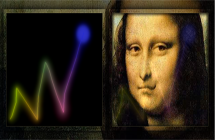In this amazing tutorial Rick Barraza explains how to use the dynamic writeableBitmap as the distortion input for a Pixel Shader.

In the first part of this series on advanced rendering techniques ( Fluid Dymamics in Silverlight), I talked about generating writeableBitmaps, using a source image as a brush, and a very basic blur and fade technique. For this tutorial, we’re going to start with a base project and progressively improve it to support line and graphic rendering, dynamic coloring, a much better blur and fade implementation, and finally, use the dynamic writeableBitmap as the distortion input for a Pixel Shader. So get ready, we have a ton of ground to cover.